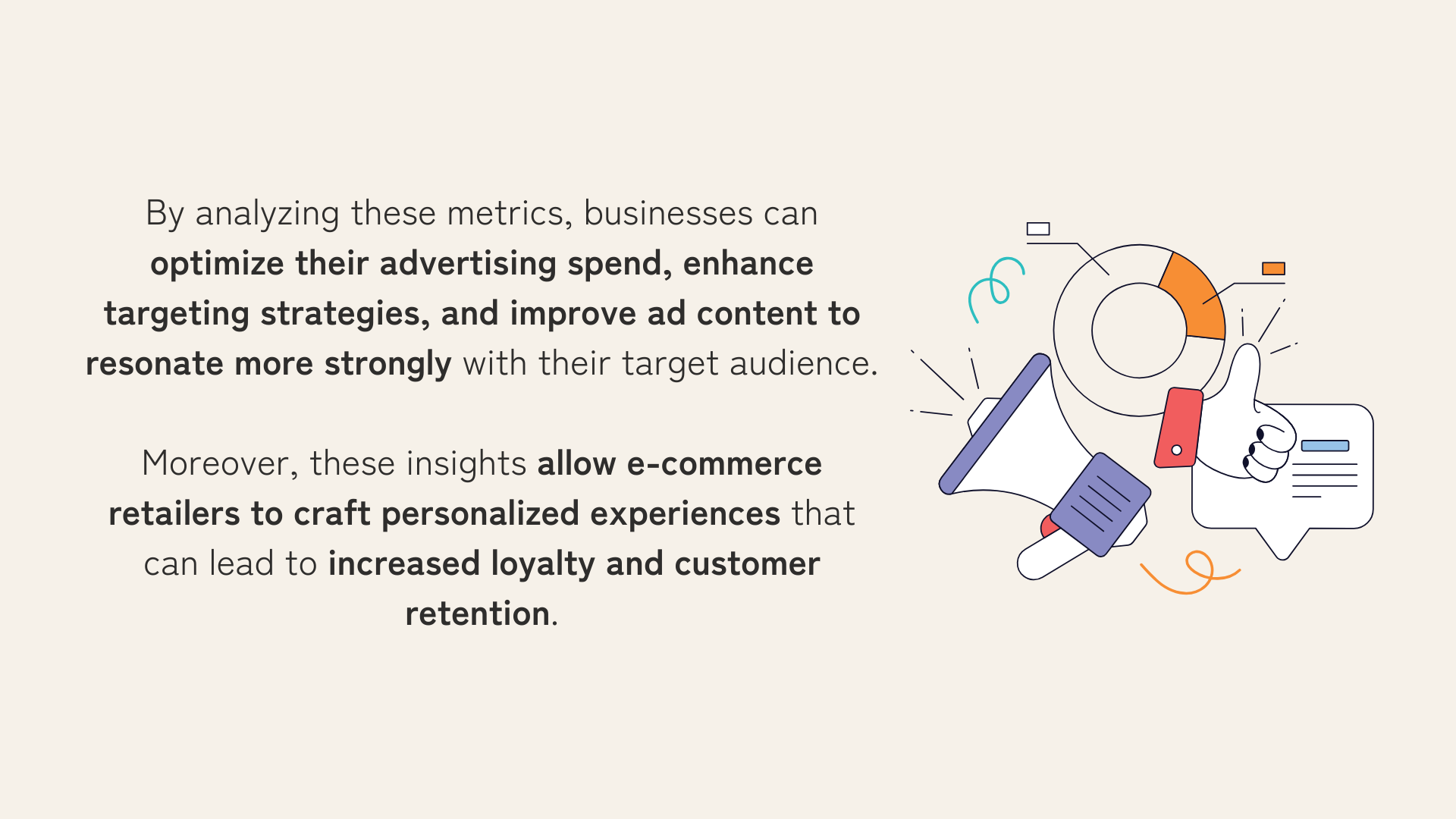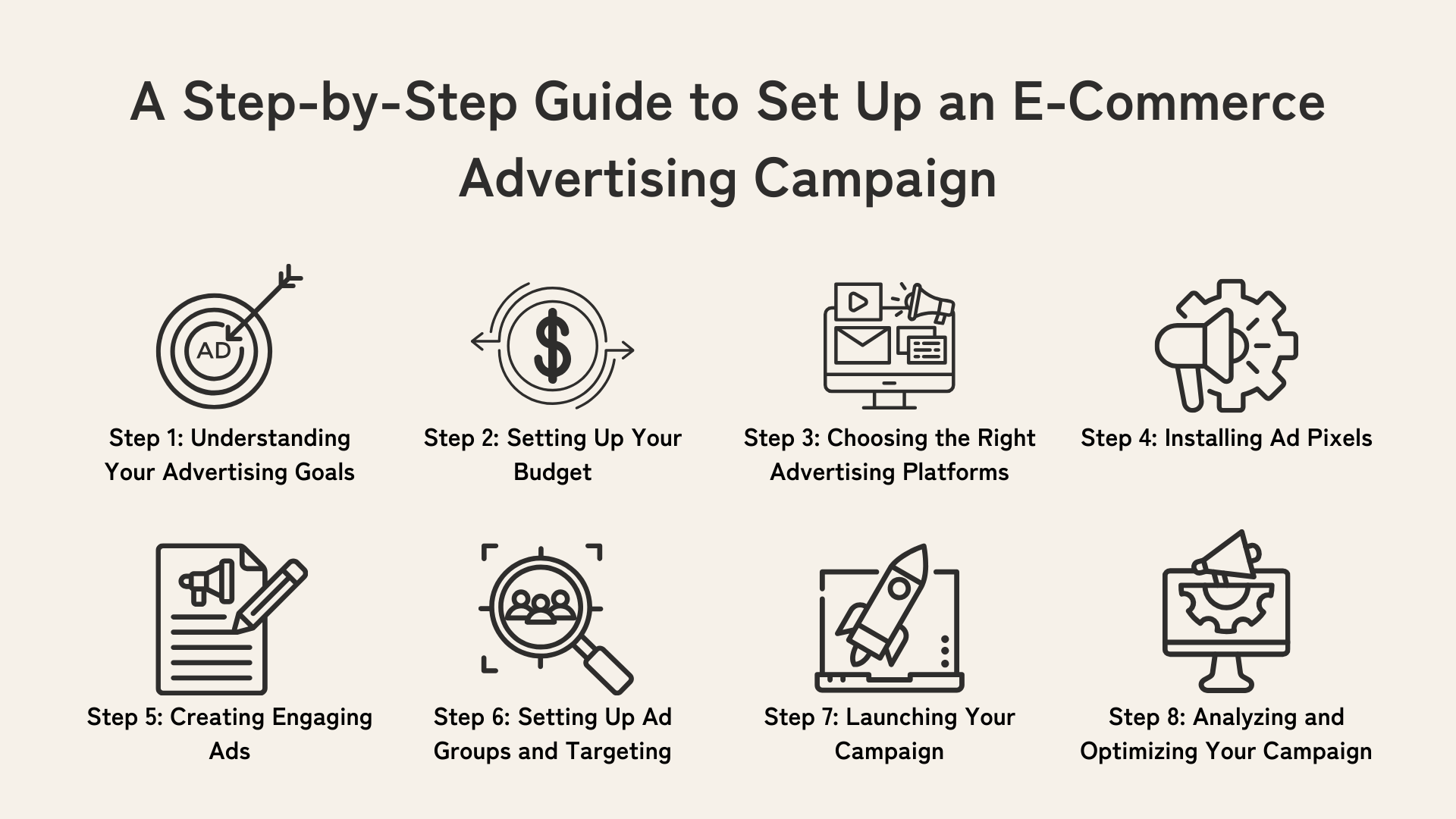Introduction
E-commerce advertising is a dynamic field that plays a critical role in the success of online businesses.
In an increasingly crowded digital marketplace, standing out to capture the attention of potential customers is more important than ever.
This guide will explore the basics of e-commerce advertising, helping beginners understand how to effectively promote their products and gain a competitive edge.
Understanding E-Commerce Advertising
E-commerce advertising leverages various online platforms to promote products and services to consumers.
In the digital age, advertising extends far beyond traditional banners and includes sophisticated strategies involving search engines, social media, email, and more.
The goal is to drive traffic, engage with consumers, and ultimately, convert that engagement into sales.
The Benefits of Advertising in E-Commerce
In the realm of online shopping, visibility is paramount. With millions of transactions taking place every day, your e-commerce brand needs to be seen and remembered.
Deploying an effective e-commerce advertising strategy provides businesses a competitive edge in today's digital age.
Let's uncover why advertising is fundamental in e-commerce and its myriad benefits.
#1 Increased Visibility
First and foremost, e-commerce advertising exponentially increases visibility.
The digital landscape is vast, and without significant and targeted exposure, an e-commerce business can quickly blend into the background.
Advertising brings your online store to the forefront, introducing your products to new customers and increasing brand visibility.
#2 Drove Sales
Through strategic advertising campaigns, brands can announce new products, promote sales and special offers, or highlight unique selling points.
These tactics are powerful motivators, prompting customers to make a purchase they might not have considered without that nudge.
#3 Built Brand Recognition
Another crucial benefit of e-commerce advertising is that it builds brand recognition.
In an increasingly competitive e-commerce arena, establishing a strong and recognizable brand identity is paramount.
Effective advertising ensures your brand is repeatedly seen. Through repeated exposure, customers become familiar with your brand, leading to greater trust and loyalty.
#4 Personalized Target
Moreover, given the advancements in technology, e-commerce advertising now allows for precision targeting.
Businesses can tailor their advertisements based on internet users' behavior, interests, demographics, or even previous interactions with your brand.
This increases advertising efficiency and effectiveness by reaching the most relevant audience subset.
#5 Optimized Retargeting
Advertising in e-commerce facilitates the retargeting of potential customers.
For example, a visitor browses your website, adds an item to the cart but does not checkout.
With retargeting, brands can display specific ads to this individual when they browse other sites, reminding them of their abandoned cart and enticing them back to finalize the purchase.
Understanding Metrics in E-Commerce Advertising
When navigating the bustling world of e-commerce, advertising metrics serve as the compass that guides businesses toward success.
These metrics allow you to track performance, optimize strategies, and understand the return on investment for your campaigns.
For beginners, dissecting these metrics can feel daunting, but they are the pillars of any successful e-commerce advertising strategy.
1. Click-Through Rate (CTR)
CTR is the percentage of users who click on an ad after seeing it. It's calculated by dividing the number of clicks by the number of impressions (times the ad was shown) and multiplying by 100 to get a percentage.
For example, if your ad receives 100 clicks and 10,000 impressions, the CTR would be 1%.
A higher CTR indicates that your ad is relevant and engaging to your target audience.
Industry benchmarks for CTR can vary, but comparing your CTR to these can give you a sense of how your campaign stacks up against others in your sector.
2. Conversion Rate
The conversion rate is a vital indicator of your ad’s effectiveness in persuading users to take a desired action, such as making a purchase.
This metric is found by dividing the number of conversions by the total number of clicks, again turned into a percentage.
For instance, if your site receives 200 conversions from 10,000 clicks, your conversion rate is 2%.
What's considered a good conversion rate can vary widely by industry and the type of campaign, but data shows the average conversion rate for e-commerce sites hovers around 1-2%.
3. Cost Per Click (CPC)
CPC measures how much you pay each time a user clicks on your ad. This metric is particularly important for managing your budget and calculating the overall cost of acquiring leads or sales.
If you spend $500 for 250 clicks, your CPC is $2.00. Monitoring your CPC helps ensure that you aren't overpaying for visitors and helps manage expenses in relation to your conversion rate and overall ROI.
4. Return on Investment (ROI)
Perhaps the most telling metric, ROI reflects the profitability of your ads. It's expressed as a ratio or percentage and calculated by subtracting the cost of the advertising campaign from the profit generated by that campaign, divided by the campaign cost.
If you spend $1,000 on advertising and generate $5,000 in sales, your ROI is 400%.
Example:
Profit from Sales: $5,000
Ad Spend: $1,000
ROI: ($5,000 - $1,000) / $1,000 = 4, or 400%
ROI is crucial for determining the sustainability and effectiveness of your advertising efforts.
5. Average Order Value (AOV)
AOV tracks the average dollar amount spent each time a customer places an order on your site.
To calculate AOV, divide your total revenue by the number of orders.
Example:
Total Revenue: $10,000
Total Orders: 400
AOV: $10,000 / 400 = $25
Improving AOV can help you grow revenue without necessarily increasing the number of customers.
6. Customer Lifetime Value (CLV)
CLV is the total revenue a business can expect from a single customer account throughout their relationship.
A higher CLV suggests customers are satisfied and likely to make future purchases, which is a positive indicator of long-term business health.
To calculate CLV, multiply the AOV by the average number of purchases a customer will make over a lifetime.

Core Strategies of E-Commerce Advertising
1. Search Engine Marketing (SEM)
SEM is all about visibility on search engines like Google or Bing. It includes:
- SEO (Search Engine Optimization): Optimizing your e-commerce website with relevant keywords, quality content, and a user-friendly design to rank organically on search engine results pages (SERPs).
- PPC (Pay-Per-Click) Advertising: Running ads on search platforms where you pay a fee each time someone clicks on your ad.
SEM is a powerful tool for attracting high-intent visitors, those actively searching for products or services like the ones you offer.
2. Display Advertising
Display ads are the billboards of the digital world. These are the image-based ads you see on websites.
Services like Google Display Network allow e-commerce businesses to place these visual ads across a vast network of websites, targeting specific audiences based on their browsing behavior, demographic, and interests.
3. Social Media Advertising
Platforms such as Facebook, Instagram, Twitter, and Pinterest offer their own advertising options.
Social media ads can be highly targeted and are excellent for reaching a specific demographic.
They can come in various formats, from simple static images to more engaging carousel and video ads.
4. Retargeting
Having visited your site without making a purchase, consumers can be "retargeted."
Specially tailored ads "follow" them around the internet, serving as a reminder and potentially nudging them back to your site to complete their transaction.
5. Influencer Marketing
Working with influencers—individuals who have a significant following on social media—to endorse or mention your products can lead to substantial exposure and credibility.
6. Email Advertising
Email campaigns sent to a subscription list can keep your audience engaged with tailored content and offers, driving traffic back to your site.
7. Affiliate Marketing
This performance-based advertising involves partnering with external websites (affiliates) that promote your products.
Affiliates earn a commission from each sale generated from their referral.
Best Practices for E-Commerce Advertising
Embarking on your e-commerce advertising journey may appear challenging, but understanding key best practices will place you firmly on the path to success.
Here are some essential strategies to consider when creating your e-commerce advertising campaigns.
1. Prioritizing Mobile Optimization
As per Statista, 73% of e-commerce sales are expected to occur on a mobile device by the end of 2021.
Consequently, it's crucial to ensure all your advertisements and landing pages are mobile-friendly.
From making sure your ads look good on smaller screens to ensuring your site loads quickly and navigates smoothly on mobile devices, mobile optimization is a must-have in the current e-commerce environment.
2. Leveraging Personalization
Consumers increasingly appreciate and respond to marketing that caters to their specific interests and behaviors.
Use customer data to tailor your advertising content, offers, or product recommendations. This increases relevancy and can significantly boost engagement and conversions.
3. Testing and Learning (A/B Testing)
Successful advertising requires constant refinement and improvement. But how do you know what changes to make?
This is where A/B testing comes in. It involves showing two versions of an ad to different subsets of your audience to see which performs better.
Whether it's testing different images, headlines, or calls to action, systematic A/B testing can dramatically improve your ad's effectiveness.
4. Using High-Quality Images and Videos
On the e-commerce battlefield, well-crafted visuals are your most potent weapon. When shopping online, customers cannot touch or try the products.
Therefore, clear, high-quality images and videos can provide the detail needed to encourage a purchase.
They also make your ads more compelling and shareable, extending their reach beyond your targeted audience.
5. Employing Retargeting Strategies
Visitors might leave your site without making a purchase for many reasons - maybe they got distracted, or perhaps they're just not ready to buy yet.
However, this doesn’t necessarily mean they’re not interested. Retargeting allows you to remind these potential customers about their initial interest or offer them relevant products based on their browsing behavior.
6. Ensuring Transparency in Advertising
The level of trust customers place in your brand can significantly affect your e-commerce success.
Be transparent in your advertising - avoid hidden costs, clearly display return policies, and respect user data.
7. Complementing Your Owned Media
While paid advertising is crucial, don't underestimate the power of owned media in your promotional strategies (your website, blog, social media channels, etc.).
Advertising should drive people to your owned media assets, where you can deepen the relationship through valuable content, community building, and brand storytelling.

Conclusion
E-commerce advertising can seem overwhelming for beginners, but understanding the basics is the first step to creating effective campaigns.
By focusing on strategic planning, high-quality content creation, personalization, and data analysis, you can create advertising campaigns that connect with consumers and drive sales.
Remember, patience and constant learning are key—each campaign brings valuable insights that refine your strategies and move your business forward.
As you launch your advertising endeavors, keep abreast of the latest trends and technologies, and always be willing to adapt to the changing digital landscape.








